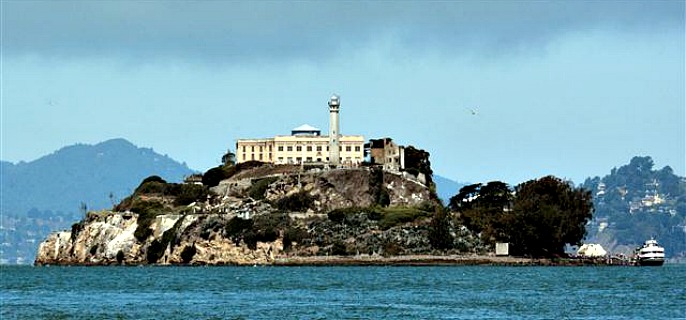
PHOTO COURTESY OF TAMÁSTSLIKT CULTURAL INSTITUTE
Together with Alcatraz Cruises, Tamástslikt Cultural Institute opens its newest exhibit, “Alcatraz: Life on the Rock” and “Alcatraz: The Last Day” on Saturday, June 27.
The 3,000-square-foot exhibit includes a photo collection by Life Magazine photographer Leigh Wiener as well as a section on the Native American occupation in 1969. The exhibit runs through Oct. 24 and admission is free on opening day, June 27.
“Alcatraz: Life on the Rock” showcases Alcatraz Island’s fascinating history and infamous inmates. Specific installations include “How Do You Know Alcatraz?” which offers a compelling introduction, complete with a model of the island and a look at The Rock’s place in history and in movies. Additionally, there are four quadrants that feature “Military History”; “Life on the Inside” with an authentic replica of a prison cell; “Strength: The Native American Indian Occupation”; and “Preserving the Rock.”
Upon the announcement of the Alcatraz Penitentiary closure in 1963, Life Magazine called upon California-based photographer Leigh Wiener to document the momentous occasion. While Wiener had a large lay-out in the 1963 issue of Life Magazine, many of Wiener’s 300+ photographs that were captured on March 21, 1963 remained unpublished, filed away in his archive, until they were revealed 45 years later. In 2008, Devik Wiener would discover this treasure trove of images taken on the closing day of Alcatraz. Twenty five of these images are now on display in the complementary the exhibit “Alcatraz: The Last Day.”
The Alcatraz exhibit has been expanded to include the Native American connection. By the late 1960s, Native Americans were relegated to the history books and out of the public consciousness. The United States government had instituted several policies since the late 1800s that were specifically designed to assimilate Native Americans and dissolve tribes. Many were disenfranchised, impoverished, and forgotten people living in urban inner-cities. In 1969, the group Indians of All Tribes claimed the island of Alcatraz in protest and in an effort to bring their plight onto a national stage. They held the island for 19 months. The occupation led to more protests and the repeal of harsh federal assimilation policies. Tamástslikt will enhance “Life on the Rock” with additional information and artifacts related to the occupation of Alcatraz and Native activism from the 1960s to the present.
For more information, visit the Tamástslikt website.








